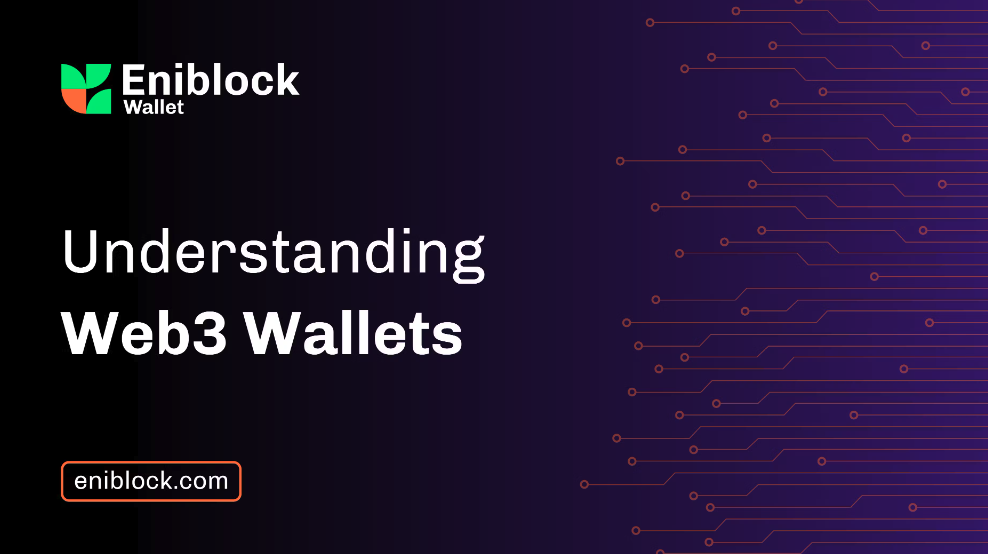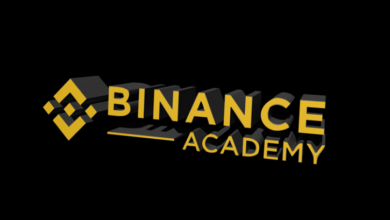

Web3 wallets are essential tools for users to access and interact with the blockchain. They enable users to store digital assets like NFTs and cryptocurrencies, manage their digital identity, and securely transact on the blockchain.
In this blog post, we will delve into the world of web3 wallets, discussing what they are, the different types of wallets available, and why they are crucial in democratizing access to the blockchain. We will also provide an overview of how to get started with the right web3 wallet that suits your needs or the needs of your users.
What is a Web3 Wallet?
A web3 wallet, also known as a crypto wallet, is a digital or physical device that stores private keys used to access and manage digital assets on the blockchain. Private keys are unique codes generated for each wallet and are required to access and transfer the digital assets stored in the wallet. They also enable digital identity, providing users with a set of cryptographic keys, including a private key and a public key, that prove ownership and control of digital assets.
Understanding Private Keys and Public Keys in Web3 Wallets:
Private keys are secret pieces of information used to prove ownership of digital assets. They are used to sign transactions sent to the blockchain and are known only to the owner of the digital assets.
On the other hand, public keys are pieces of information used to verify that a transaction was signed by the owner of a digital asset. They are used to authenticate transactions and can be shared publicly.
How Web3 Wallets Work:
When a user creates a web3 wallet, they receive a unique private key that proves ownership of their digital assets. This private key is used to generate a corresponding public key that verifies the authenticity of transactions. By using these keys together, a web3 wallet enables digital identity and ownership of digital assets in a secure and decentralized manner. Web3 wallets also provide users with a unique public address, which can be shared publicly to receive digital assets.
This public address can be tied to a decentralized name service, making it easier for others to interact with the wallet’s public key. For example, on the Ethereum blockchain, users can register an .eth domain to their wallet through the Ethereum Name Service (ENS), allowing others to send digital assets to their wallet by addressing it to their .eth domain instead of their public key, which is a randomized string of numbers and letters.
Understanding the Different Types of Web3 Wallets:
Web3 wallets come in different types, each with its unique features and security considerations. Here are the main types of web3 wallets:
Hot Wallets:
A hot wallet, also known as a software wallet, is connected to the internet. It allows for easy access and management of funds, but it is more susceptible to hacking and security threats. Hot wallets are typically used for storing small amounts of cryptocurrency that are frequently traded or spent, as opposed to cold wallets, which are offline and used for long-term storage of large amounts.
a. Desktop Wallets:
A desktop wallet is a web3 wallet that is installed on a computer or laptop. It allows users to store, manage, and trade cryptocurrency directly from their desktop or laptop computer. Desktop wallets can be software-based wallets where users download the wallet application and install it on their device or web-based wallets that can be accessed via a browser. While desktop wallets are considered more secure than online wallets, they are still connected to the internet and can be vulnerable to hacking, malware, or phishing attacks.
b. Mobile Wallets:
A mobile wallet is a web3 wallet designed for use on a mobile device, such as a smartphone or tablet. It allows users to store, manage, and trade cryptocurrency directly from their mobile device. Mobile wallets are typically available as mobile applications that can be downloaded from app stores and installed on the user’s mobile device. They offer convenience and accessibility, allowing users to manage their digital assets on the go. However, like desktop wallets, mobile wallets are also connected to the internet, making them vulnerable to security risks such as malware or device theft.
Cold Wallets:
A cold wallet, also known as a hardware wallet, is a physical device that stores private keys offline, disconnected from the internet. This makes cold wallets highly secure as they are not susceptible to online threats. Cold wallets are typically used for long-term storage of large amounts of digital assets, providing users with enhanced security and peace of mind.
a. Hardware Wallets:
A hardware wallet is a physical device, such as a USB stick or a dedicated hardware device, that stores private keys offline. Private keys are generated and stored securely within the hardware wallet, and transactions are signed within the device itself, making it highly secure against online threats. Hardware wallets are considered one of the most secure options for storing digital assets, as they are not connected to the internet and are protected by layers of encryption and authentication.
b. Paper Wallets:
A paper wallet is a physical printout or written record of the private key, usually in the form of a QR code or a series of alphanumeric characters, that is stored offline. Paper wallets are considered one of the most secure options as they are completely offline and not susceptible to online attacks. However, paper wallets require careful handling and storage to protect them from physical damage or loss, and users need to be cautious when using them to avoid exposing their private keys.
c. Web-based Wallets:
Web-based wallets, also known as online wallets or hosted wallets, are web-based platforms that manage private keys on behalf of users. Users create an account on the platform and access their digital assets through a web browser. Web-based wallets are convenient and easy to use, as they can be accessed from any device with an internet connection. However, they come with inherent security risks, as the private keys are stored on the platform and are susceptible to hacking or breaches.
Custodial vs Non-Custodial Wallets:
a. Non-custodial
In a non-custodial wallet, the user holds the private keys and has full control over their funds. This means that the user is solely responsible for the security of their funds, and no third-party, including the wallet provider, has access to them. Non-custodial wallets can be software-based, such as desktop, mobile, and web wallets, or hardware wallets. Examples of non-custodial wallets include Coinbase Wallet (different from Coinbase Exchange which is custodial), MetaMask, Phantom, and Rainbow Wallet.
b. Custodial
On the other hand, custodial wallets are wallets in which a third-party, such as an exchange, holds and controls the private keys on behalf of the user. This means that the user does not have full control over their funds, and the third-party has access to them. The user’s funds and security are dependent on the actions and security measures of the custodial wallet provider. Examples of custodial wallets include exchanges like Coinbase Exchange (different from Coinbase Wallet which is non-custodial), Kraken Exchange, and Reddit Vault.
Email Wallets
A subsection of custodial wallets that has gained significant traction recently is email wallets. Email wallets allow users to sign up for, log into, and create web3 wallets using their email addresses, making it easy for users to use blockchain-based apps without any prior crypto experience. This frictionless user onboarding and adoption has made email wallets popular for companies that want to provide a simple and accessible option for users unfamiliar with traditional web3 wallets.
Smart Contract Wallets
Another type of wallet that has gained popularity is smart contract wallets. Most conventional web3 wallets are Externally Owned Accounts (EOAs) controlled by private keys. However, smart contract wallets are built on top of smart contracts, which enable additional security functionalities that EOAs do not have, thanks to a concept called account abstraction. If a wallet is controlled by a smart contract, then it is programmed by that smart contract’s code, allowing for features such as social recovery, transfer limits, and account freezing for added usability and security.
Multi-sig Wallets
A specific category of smart contract wallets that is growing in popularity is multi-sig wallets. Multi-sig wallets are smart contract wallets that require more than one signature to authorize a transaction, providing added security for the funds or assets stored within the wallet. These wallets are managed by trusted third parties, such as friends, family, or coworkers, who need to approve a transaction for it to go through. This adds an extra layer of security, as a bad actor would need access to multiple parties’ wallet addresses or the majority of signatures to hack the wallet. However, the downside is that the transaction process can be slower due to the need for multiple parties to sign off on transactions.
Examples of smart contract and multi-sig wallets include Argent and Biconomy with account abstraction features, and Safe (formerly known as Gnosis Safe) for multi-sig functionality.
MPC Wallets
Another type of wallet is the MPC wallet, which stands for Multi-Party Computation. MPC allows two or more parties to compute without revealing any private information to each other. In web3, MPC wallets replace a wallet’s private key with multiple independently-created “secret shares,” providing a self-custodial option for users without the risk of losing a single private key or seed phrase. Examples of MPC wallets include Eniblock, ZenGo, Fireblocks, and Lit Protocol.
Choosing the Right Web3 Wallet:
Selecting the right web3 wallet depends on various factors, including the user’s security requirements, ease of use, and intended use case. Here are some considerations to keep in mind when choosing a web3 wallet:
- Security: Security should be a top priority when selecting a web3 wallet. Consider the type of wallet that best aligns with your security requirements. Hardware wallets and paper wallets are considered the most secure options as they store private keys offline, while hot wallets provide more convenience but may be more vulnerable to online threats.
- Ease of Use: Consider the user experience and interface of the web3 wallet. Some wallets may have a steeper learning curve, while others may be more user-friendly and easy to navigate. Choose a wallet that is intuitive and fits well with your level of technical expertise.
- Features: Different web3 wallets may offer different features, such as multi-currency support, decentralized name service integration, or built-in exchange capabilities. Consider the features that are important to you or your users and choose a wallet that aligns with those needs.
- Reputation: Research the reputation of the web3 wallet and the company or team behind it. Look for reviews, testimonials, and feedback from other users to gauge their trustworthiness and reliability.
- Regulation: With the growing regulatory landscape around cryptocurrencies and blockchain technology, it’s important to consider whether a web3 wallet is regulation-friendly. Some jurisdictions, such as the European Union, have introduced regulations like the Markets in Crypto-Assets (MiCA) and the Pilot Regime for Market Infrastructures based on Distributed Ledger Technology (DLT) (PSAN) that aim to bring cryptocurrencies and related services under regulatory oversight. Choosing a web3 wallet that complies with relevant regulations can provide added assurance and protection for users.
- Backup and Recovery: Look for web3 wallets that provide options for backing up and recovering your wallet in case of loss or theft. Features such as seed phrases, private key backups, and multi-signature authentication can provide additional layers of security and allow you to regain access to your funds in case of unforeseen circumstances.
- User Control: Web3 wallets should prioritize giving users full control over their private keys, seed phrases, and assets. This means that the wallet should not store or have access to the user’s private keys or seed phrases, as it’s the user’s responsibility to safeguard their own funds. Be wary of wallets that do not provide this level of user control and custody over their assets.
Conclusion:
In conclusion, web3 wallets play a critical role in the blockchain ecosystem, enabling users to securely store, manage, and trade digital assets. With different types of wallets available, users should carefully consider their security requirements, ease of use, features, reputation, and community support when choosing a web3 wallet that best meets their needs. It’s crucial to prioritize security and choose a reputable wallet to protect valuable digital assets in the Web3 era.



